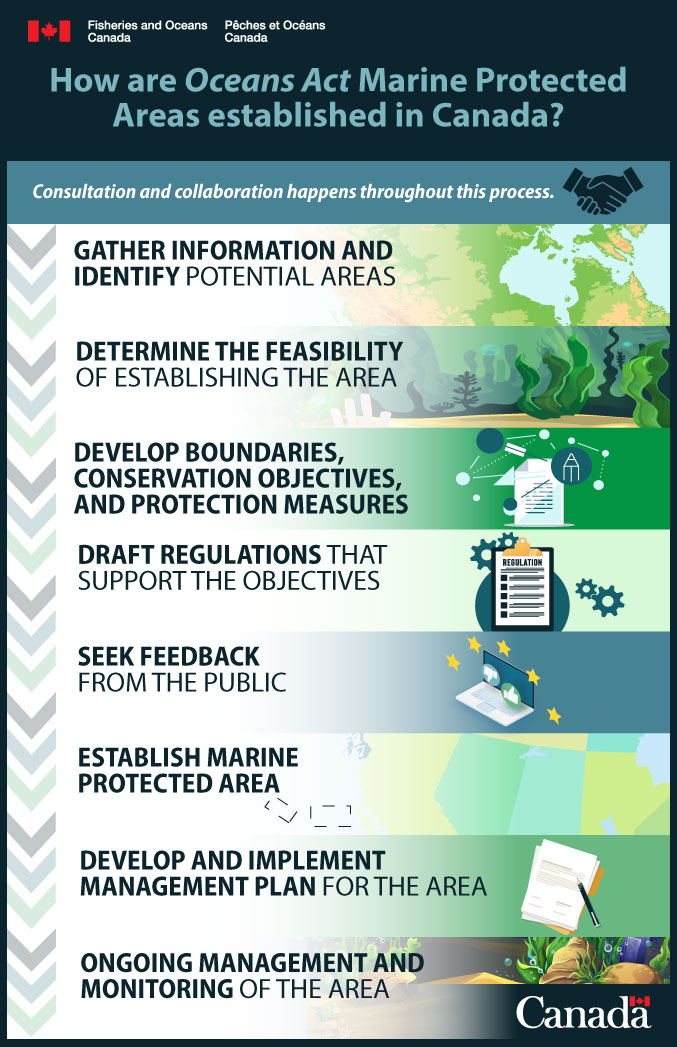About Marine Protected Areas
A Marine Protected Area, commonly called an MPA, is part of the ocean that is legally protected and managed to achieve the long-term conservation of nature. MPAs may allow some current and future activities depending on their impacts to the ecological features being protected. They provide many benefits for Canadians, from environmental to social and cultural contributions.

Contribute to a healthy marine environment:
- MPAs and MPA networks help conserve and protect marine species and populations, the diversity of ecosystems that marine organisms depend on, and special places such as underwater canyons and hydrothermal vents.
- MPA networks also help to protect important ecological links between one area and another, contributing to improved species resilience and adaptation to future pressures.
Support economic goals of society:
- Resilient and healthy ecosystems help to support sustainable industries, local economies and coastal communities.
- In time, protected areas can be a source of young fish to disperse to other areas, and a source of larger and more abundant fish for unprotected areas near MPAs.
- A MPA network strategy clarifies our direction for marine conservation, so ocean users will have a clearer vision of their potential access and restrictions to marine resources.
Contribute to Canadian culture:
- MPAs can be developed to conserve and protect marine areas with spiritual or cultural heritage value such as archaeological sites, shipwrecks, and areas traditionally used by Aboriginal and non-aboriginal communities.
- Recreation, tourism and education activities that are consistent with the objectives of a protected area may be permitted, improving public awareness, understanding and appreciation of Canada’s marine heritage.

For more information on establishing Marine Protected Areas.
- Date modified: